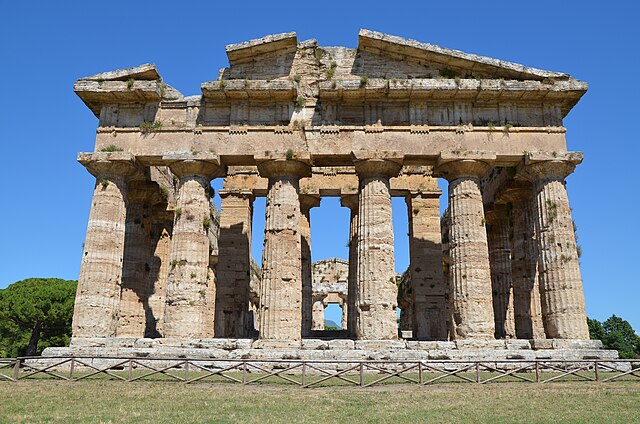A cella or naos is the inner chamber of an ancient Greek or Roman temple in classical antiquity. Its enclosure within walls has given rise to extended meanings, of a hermit's or monk's cell, and since the 17th century, of a biological cell in plants or animals.
Greek Temple of Apollo at Paestum with centrally located cella
The Maison Carrée at Nîmes with its cella offset behind the hexastyle portico
Greek temples were structures built to house deity statues within Greek sanctuaries in ancient Greek religion. The temple interiors did not serve as meeting places, since the sacrifices and rituals dedicated to the respective ouranic deity took place outside them, within the wider precinct of the sanctuary, which might be large. Temples were frequently used to store votive offerings. They are the most important and most widespread surviving building type in Greek architecture. In the Hellenistic kingdoms of Southwest Asia and of North Africa, buildings erected to fulfill the functions of a temple often continued to follow the local traditions. Even where a Greek influence is visible, such structures are not normally considered as Greek temples. This applies, for example, to the Graeco-Parthian and Bactrian temples, or to the Ptolemaic examples, which follow Egyptian tradition. Most Greek temples were oriented astronomically.
The Parthenon, on the Acropolis of Athens, Greece
The Caryatid porch of the Erechtheion in Athens
Model of a typical Doric temple, the Temple of Aphaia on Aegina (Glyptothek, Munich)
Early metope fill lichude, museum at Paestum, depicting Heracles killing a giant






